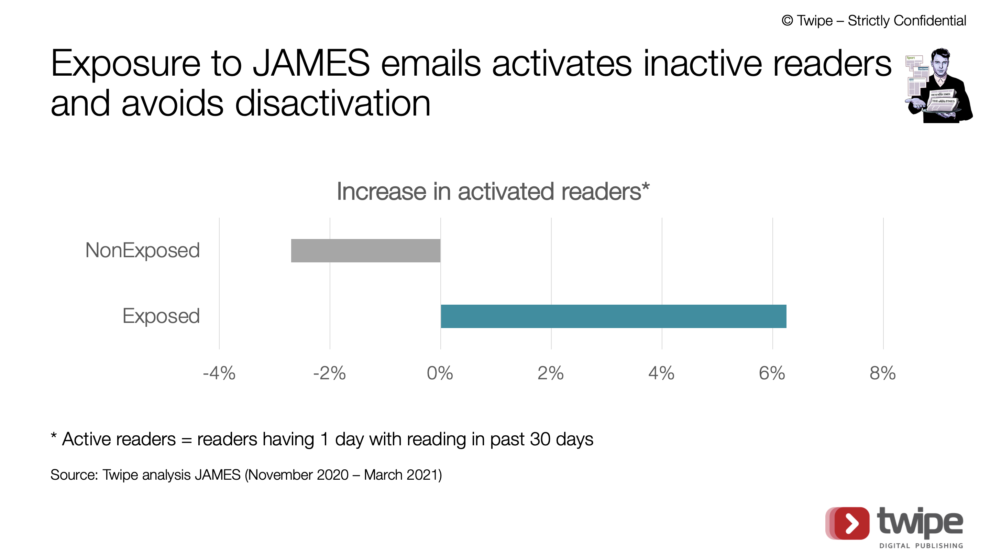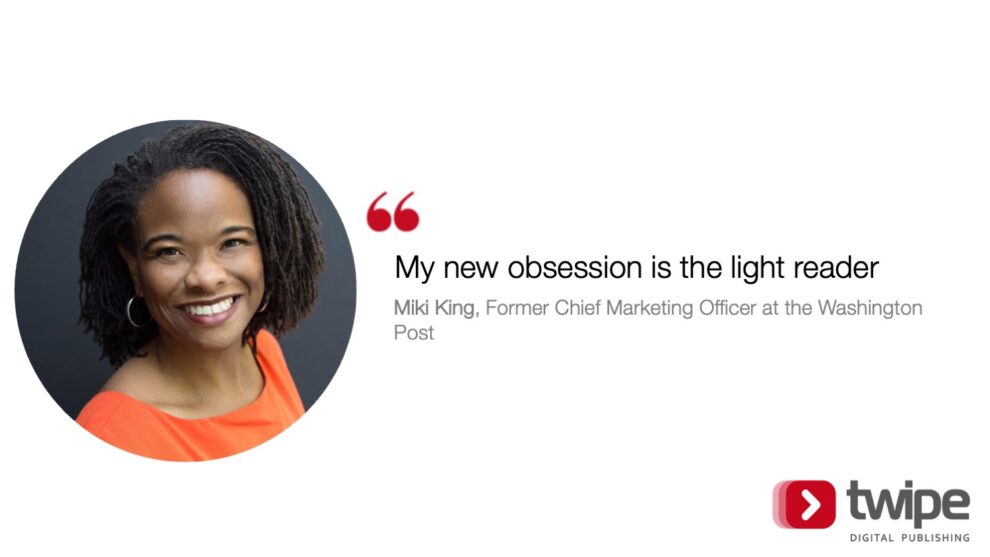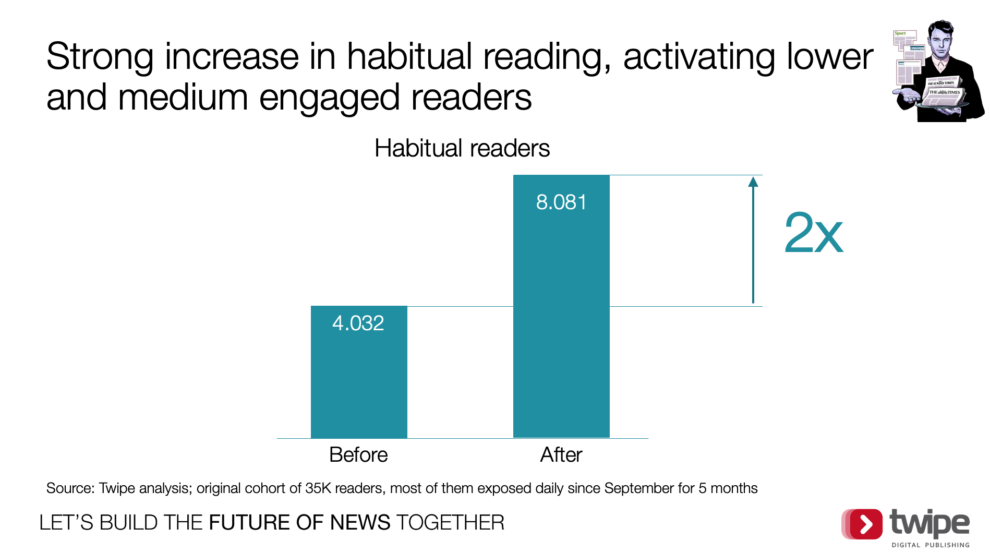Blog
3 types of newsreaders and strategies to engage them
As the world was hit by a pandemic and a series of events attracting global attention, like Black Lives Matter and the US Elections, people turned to the news. These weren’t just the usual habitual news readers, but light-readers also turned to publishers for reliable, fact-based news.
Much has been said about the different faces of news readers with various sources categorising them as: light readers, zombie readers and habitual readers. As an industry now looking to fight for subscriber revenue, publishing needs to undergo an audience transformation. Publishers must understand the reader like never before to give them the offer that they can’t refuse.
Zombie Readers: The silent subscribers
Recent research has shown that 39% of news subscribers become inactive “Zombies”, readers who visit their news site less than once a month. For local news outlets, this number was found to be more than 50%. Much has been discussed about these Zombie readers. The ethical nature of taking their money whilst not having them engage with our product is one that is often problematic for publishers. Thankfully, there has been a recent trend in publishers trying to engage, or even contact, these zombie readers.
Activating Zombie readers (or “sleeping beauties” as INMA prefer to call them), is at the core of our JAMES personalisation programme. In an analysis done by our team on our JAMES data, we could see that Zombies exposed to JAMES personalised newsletters have been activated to a higher extent.

Another way to activate these Zombie subscribers is by trying to start a conversation and asking for their opinion. One of the best examples of this was Dutch publisher NRC who went to visit their subscribers at their homes. By doing this, publishers can demonstrate that they care more than what is purely written in articles, and that they also have more to offer them which motivates them to revisit your content.
Timely identifying the readers that are at risk to become inactive is a great way to avoid Zombie subscribers. Tools such as the EngageReaders solution helps publishers to detect changes in the pattern of reading of subscribers and help publishers identify and act on readers at risk. German publisher DuMont uses push notifications to proactively re-engage readers at-risk as explained by Stefan Hagel in the video below.
Light Readers: Publishers’ new obsession
According to INMA’s latest report, “light readers are casual, infrequent, and picky consumers of news”. These light readers make up a significant proportion of news readership as most subscribers read a little, and many don’t read at all. Whilst not being news addicts like most in the industry, light readers are extremely interested in the evergreen news stories that interest them.
Light subscribers are amongst the most difficult to attract, and also the most difficult to keep. It’s not surprising that in her speech earlier this year at the INMA Subscriptions Summit, Miki King, former Chief Marketing Officer at the Washington Post, declared the light reader as being her new obsession. This is particularly intriguing since they resemble non-subscribers in their behaviours and the types of content that interest them. Indeed, light readers are more interested in very specific topics or feature types.

Louise Story, Digital Growth Summit Speaker and former Chief Product and Technology Officer for The Wall Street Journal, told INMA that: “Topics attractive to light-reading subscribers of The Wall Street Journal succeed with heavy readers, too. It doesn’t work the other way.”
Attracting, converting, and retaining the light reader involves both understanding news consumers who are unlike ourselves and tailoring our product to their needs. For this reason, publishers need to change both their marketing and daily news offer to expand beyond habitual users.
Attracting and converting a light reader starts with de-anonymisation. The registration walls publishers have began to establish are an inoffensive way to get something in return for people reading news for free. They are also the start of what INMA describe as the engagement loop. As a light reader continues their journey around the engagement loop, they start hitting paywalls. Once this happens multiple times, INMA identified the international average as seven — light readers are pushed towards subscribing.
Once light readers subscribe, it is important to get them to build the habit of reading the news. Research suggests that the first 100 days are critical to engage new subscribers. Therefore ensuring that the habit of reading the news is instilled within these first 100 days is vital. In our habit building research paper, we uncovered a series of techniques on how to drive habit formation. By exposing light readers to different products on offer, such as puzzles, and getting them to subscribe to newsletters, subscribers are encouraged to engage with the news.
Engage these light readers, and the only way is up. These light readers are amongst the most likely to be pushed up the funnel to habitual readers.
Habitual Readers: Your most loyal fans
Habitual readers love the news. These news readers are core to subscriber bases. Like most within the industry, news apps are essential for them. Keeping them loyal is therefore at the core of our mission. No matter what the situation, these are the news lovers who subscribe to support “quality journalism”.
Building up relationships with these subscribers is paramount to sustained success, but how can publishers do this?
The Telegraph knew that they had to create a quality product for their most loyal subscribers, who they identified as their edition readers. For this reason they invested in a high-quality subscriber only digital edition and news app.
In her session at the Digital Growth Summit, Katie Vanneck-Smith explained the unique ways in which Tortoise works to engage subscribers. Through their daily “think-ins”, Tortoise bring their subscribers inside the newsrooms. In doing this, they have a direct say over the content. This unique approach to content makes sure that habitual readers feel truly involved in the news.
The Economist use subscriber-only events to engage their habitual readers. These exclusive invitations give subscribers access to not only top level journalists, but also celebrity names such as Bill Gates. By making these subscriber-only events, publishers give their habitual readers a genuine feeling of being appreciated.
Habitual readers are also revenue machines. INMA found that for The Boston Globe, based on internal data, 2% of users generate 86% of revenue, with a similar trend on show at The New York Times where more than 90% of its revenue comes from the top 3% of users. Therefore, it’s critical to increase habitual readers for sustained revenue streams. This is something where we have seen JAMES newsletters playing a particularly impactful role.

Of course, building up a loyal subscriber base needs much more than habitual readers. These news addicts can form the foundations for our newspaper subscriptions; they cannot sustain it since there are only a limited number of them out there. Publishers need to move beyond that cohort to grow subscription businesses for long-term sustainability.
Other Blog Posts

Stay on top of the game
Subscribe to Twipe’s weekly newsletter to receive industry insights, case studies, and event invitations.
"(Required)" indicates required fields

